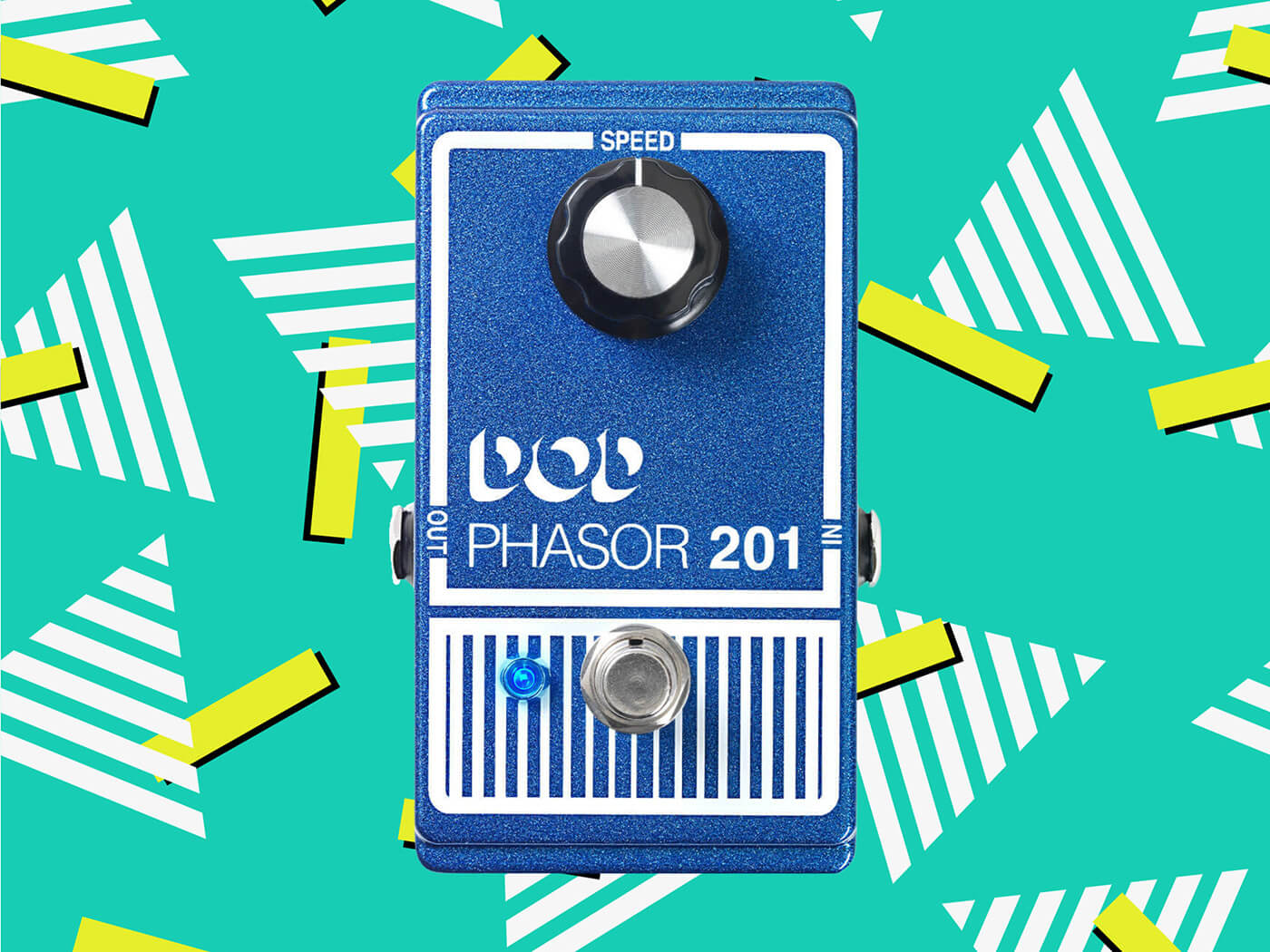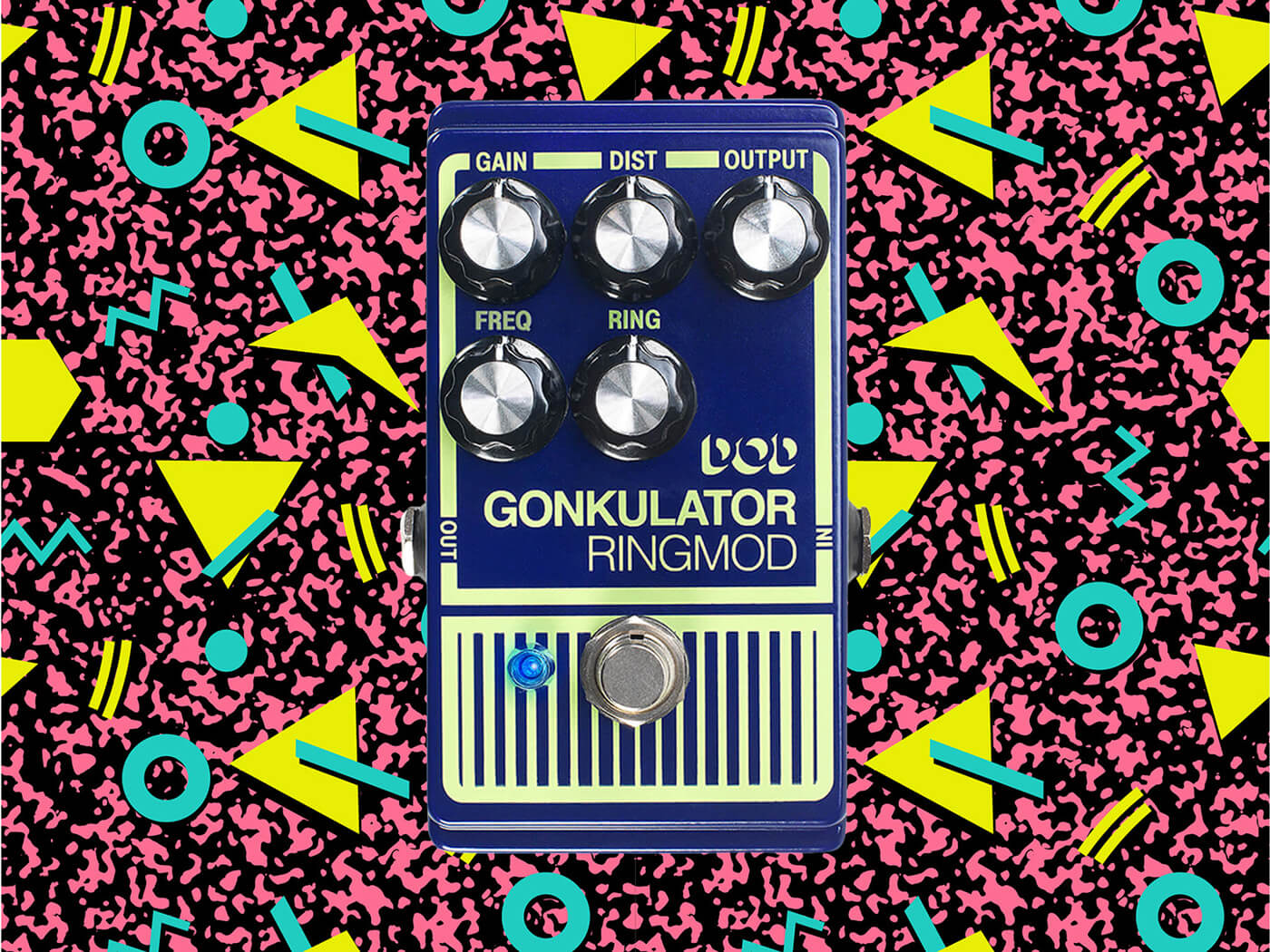DOD Overdrive Preamp 250, Phasor 201 and Gonkulator review: welcome back, DOD
These affordable analogue pedals are a good reminder of what we almost lost.

Review Overview
Our rating
9
Our verdict
The return of DOD and DigiTech was a wonderfully positive moment for the pedal community. Designer Tom Cram had first revived the brands back in 2013, updating classic pedals to modern standards and bringing in a host of brilliant new devices.
In 2018 Samsung bought its parent company Harman, and didn’t seem particularly interested in making guitar pedals – to the point of laying off most of the DOD/DigiTech staff. To lose them would have been a tragedy, but now CorTek has brought them back from the brink. So to celebrate DOD’s return in particular, let’s take a look at three of its most notable analogue pedals, ranging from the traditional to the, well, less traditional.
Overview
First in our DOD trio, we have the Overdrive Preamp 250. This circuit architecture hasn’t changed much since the 70s, let alone 2013. Drawing on the MXR Distortion+, it uses an op-amp to make your signal louder, and some silicon clipping diodes to add distortion. Easy peasy, LM741-squeezy.
Second is the Phasor 201, with an equally lengthy heritage dating back to the 70s. It bears a single knob to control speed. Given that it’s a vintage-inspired one-knob phaser pedal, you might immediately want to compare it with something like the MXR Phase 90 – but it’s quite a different, and more restrained, beast. The Phase 90 easily enters ‘jet engine’ territory, while the Phasor 201 has a warm, subtle character, with a less dramatic impact on your sound.
Finally, we come to the fabled Gonkulator, an effect about as warm and subtle as the Dyatlov Pass incident. It’s technically two pedals in one: a distortion circuit (taken from the DOD Grunge) running in parallel to a ring modulator. The 2013 update added an external frequency control, letting you tune the note of the carrier’s oscillation to create odd, harmonious droning or wild, clanging dissonances. If that sounds unpleasant, well, welcome to ring modulation.
Since they were officially revived when Tom Cram first started the DOD renaissance in 2013, these pedals haven’t changed much. Or, indeed, at all: popping off the back, we can see that the PCB silkscreen layout has ‘2013’ written on it. This is by no means a bad thing: those updates brought the units up to what we still consider ‘modern’ pedal standards, and were well-received for a reason. Compared to vintage DOD units, we’ve got standard 2.1mm DC power jacks, true bypass switching and indicator LEDs across the board. (Yes, indicator LEDs weren’t always standard – terrifying).
In use
Overdrive preamp 250

The OD 250 is a beautifully simple box. There’s no tone knob, so frequency response is tied to the gain control: increase it, and more bass is cut. This is, /technically speaking, a limitation. But we can’t ever get it to sound bad, so we can’t be mad about it. Lower-gain sounds being more bassy mean they’re still confident despite not being as raucous. Higher gain sounds being less bassy means they don’t get flabby and undefined. Everything from subtle breakup to abrasive noise-rock is no issue. It won’t do super-high-gain saturation on its own, but paired with a high-gain amp, it tightens things up like a good Tube Screamer might – albeit with less of a honky mid-push.
When we spoke to Tom Cram he revealed that the 2013 version of the 250 had a little bit more bass than the average vintage unit, and that sounds accurate to our ears. However, this can be viewed as a utility tweak to make the pedal more suited to modern players, in the same vein as the addition of a 2.1mm DC jack. It’s not the 70s anymore: that bass is less likely to be added back into the mix by a Marshall full-stack.
Overall, it might be strange to say that the simplicity of the circuit is audible, but really that’s what it feels like: your tone goes in, gets louder and more distorted, and then comes out. No relay-switched capacitor network for the perfect balance of lower and upper midrange. Just: louder, gainier.
Transparent has come to mean something entirely different when it comes to overdrives, so perhaps let’s call it ‘reactive.’ It’s distorting and filtering quite a lot, but it’s not going to overpower the character of the rest of your rig. You’ll notice when you change what’s before and after it in the signal chain, from guitars to amps to pedals, but all the while it’s still asserting its own tonal identity.
Phasor 201

The Phasor 201 is a two-stage analogue phaser with just a single control for speed. Given this, there’s not much tonal tweaking to be done on the unit itself. Its slowest settings get pretty slow, but its fastest never get so choppy that the oscillation itself starts to create an audio frequency.
Inside the circuit, very little has been changed since the original original, the biggest update being two LF3533N dual op-amps in the place of a single LM348N quad op-amp chip. This seemingly hasn’t impacted the actual sound of the modulation, which remains a lovely thing indeed: rich, warm and soupy, basically, all of the tonal buzzwords that come to mind when you think ‘vintage’.
Because of its two-stage nature, the effect sits more ‘alongside’ your signal than it does on top of it, feeling markedly subtler than its four-stage equivalents. It never robs chords of their complexity, nor does it introduce too many harmonic overtones once you’ve kicked on an overdrive. It’s actually kind of hard to tell you’ve got a phaser pedal on sometimes, until you turn it off, and everything suddenly sounds a bit more boring.
That said, as lovely as the effect is, it’s not really going to give you drastic, howling sweeps. If that is what you want out of a phaser, you might want to explore that other vintage one-knob unit, the MXR Phase 90. But if you’re looking for something a little subtler, the 201 is hard to fault.
Gonkulator

Oh, dear Gonkulator, how misunderstood you are. A quick clarification for those unfamiliar: ring modulation is not modulation in the sense that choruses, flangers and so on are modulation. Instead of affecting your sound in some way over time, it multiplies the input signal by a carrier frequency, creating entirely new overtones and harmonics, as a function of the difference between input and carrier. The resulting sound is more reminiscent of the robotic screeches of ancient dial-up internet modems rather than a guitar effect.
Compared to the 1990s original, the 2013 revamp makes control over the carrier frequency an external knob rather than an internal trimmer. This makes it easy to Gonk in the key you’re playing in for a strange synth-drone accompaniment. Or just detune it by a microtone to mangle your sound beyond recognition. The built-in distortion, blended in parallel, circuit also lets you get even more obnoxious with your bleep-bloops.
The Gonkulator is a social little guy, happiest when connected to lots of friends such as delay, reverb, modulation and looper pedals. Doing this lets you treat it more like its own instrument rather than a guitar stompbox, with the carrier frequency control becoming a discrete oscillator. Introduce loops and delays when sweeping it about, and not only will you have fun for hours you’ll soon find yourself browsing Eurorack modules on Reverb.
While it’s great fun to stack the Gonkulator, be warned: it’s the sort of pedal that will completely fuck up everything before and after it in the chain. If you’re seeking just a little extra spice on your board, adding the Gonkulator into the mix is the equivalent of dropping an entire diced Carolina Reaper into a chilli. Interesting results are guaranteed, yes, but whether you’ll enjoy them depends on your level of masochism.
Conclusion
While they’re not all for everyone, these pedals are every bit as inspiring and fun as units twice their price. The general build quality and QC is rock-solid, even if they’re not as premium feeling as your average hand-assembled boutique stompbox. Let’s also keep in mind these are all under £130.
In short: The two most important things DOD’s return reminds us of are these: “vintage reissue” can mean affordable, and “affordable” does not have to mean AmazonBasics levels of dullness.
Key Features
Overdrive Preamp 250 – 9/10
- PRICE: £99
- DESCRIPTION Analogue overdrive pedal, made in China
- CONTROLS Level, gain
- FEATURES True bypass switching, 2.1mm 9V centre-negative DC power
- DIMENSIONS 66mm x 115mm x 55mm
Phasor 201 – 8/10
- PRICE: £99
- DESCRIPTION Analogue phaser pedal, made in China
- CONTROLS Speed
- FEATURES True bypass switching, 2.1mm 9V centre-negative DC power
- DIMENSIONS 66mm x 115mm x 55mm
Gonkulator – 8/10
- PRICE: £129
- DESCRIPTION Ring modulator with parallel distortion circuit, made in China
- CONTROLS Distortion blend and gain, carrier frequency, ring modulation blend, overall output level
- FEATURES True bypass switching, 2.1mm 9V centre-negative DC power
- DIMENSIONS 66mm x 115mm x 55mm
- CONTACT digitech.com
